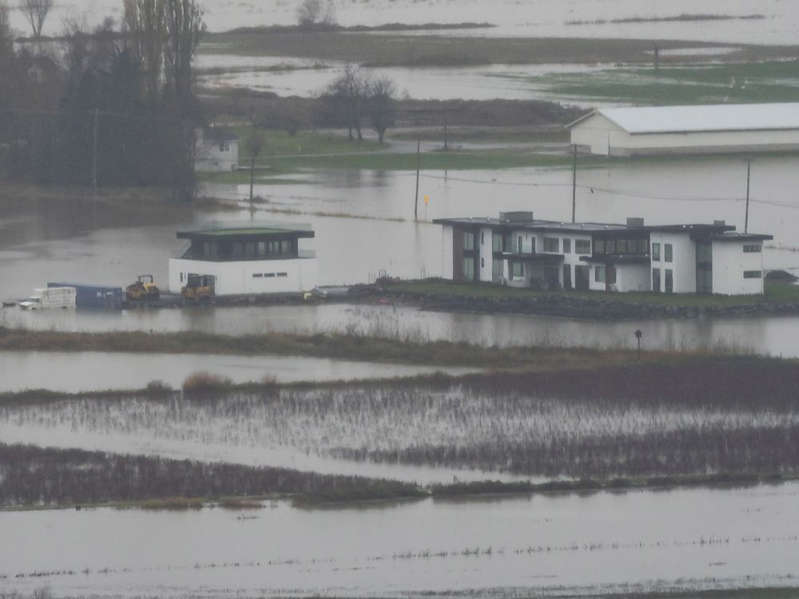
The latest extreme weather to hit B.C. is another sign that climate change is a “clear and present danger,” according to the Insurance Bureau of Canada .
Aaron Sutherland , vice-president of the bureau’s Pacific region, said while B.C. had been relatively spared the effects of previous extreme weather events compared to other provinces and countries, all that changed in 2021.
“We opened the year with some severe storms, had the heat dome, really devastating wildfires, and now we’ve had this,” he said referring to the recent rainstorm, flooding and mudslides.
“It should be a real wake-up call that climate change isn’t some future threat. It is a clear and present danger that’s increasingly impacting all of us today.”
On Wednesday, Sutherland the insurance industry declared the recent extreme weather in B.C. a catastrophic event, meaning losses of at least $25 million.
While a final tally will likely take at least a month, he expected them to likely be “much, much more” than that amount.
This year, B.C. had three other similar catastrophic events: The White Rock Lake wildfire in the Thompson-Nicola regional district in July and August resulted in $77 million in claims; the Lytton wildfire in late June, $78 million; and winter storms in January, more than $100 million.
Nationally, average annual cost of property damage or losses due to severe weather has increased from about $400 million before 2009 to about $2 billion annually in the last few years.
The IBC is the national association of the country’s home, business and private auto insurers.
Sutherland agreed that the climate emergency is making for “unexpected bedfellows” where you have the country’s insurance industry association and the environmental group David Suzuki Foundation saying essentially the same thing.
“For insurers, we’re simply following the numbers,” he said. “And the numbers are telling us unless something is done, the amount of money insurers are spending to rebuild homes and businesses following floods, fires and storms is only going to increase unless we get serious about the types of investments we’re making to prevent that type of damage happening in the first place.”
Sutherland also answered general questions homeowners may have about insurance:
Q: What kind of home insurance coverage do most British Columbians have to cover them in case of flooding?
Standard home insurance, he said, typically covers water damage from a burst pipe or a tree breaking through a roof resulting in rain damage.
Water damage from a sewer backing up is a separate, optional policy.
Protection from a riverbank overflowing its banks is provided by separate, optional flood coverage. He said about half of British Columbian homeowners have flood coverage, although that is likely to be much less in areas of high risk.
Q: What homeowners are likely to have flood insurance?
In general, if you live adjacent to a waterway or in a lower-lying area, it may be more difficult to get flood insurance. But even that can vary. If one house, for example, is more elevated than its neighbours, it may be able to get coverage, even if it is closer to a waterway.
Sutherland said it can be complicated because the location and circumstances will have an influence. He said most flood maps in B.C. are from the 1980s and don’t take into account recent climate and topological data.
Q: What kinds of extreme events are covered by standard insurance policies?
Standard home insurance policies provide coverage for fire, wind and hail. Not covered as part of a standard policy are flood and earthquakes, which are optional.
He said there is no insurance available for landslides, which falls under government disaster assistance.
Anyone with questions about insurance should contact their insurance representative. People can also call the Insurance Bureau of Canada at 1-844-2ask-IBC (1-844-227-5422).